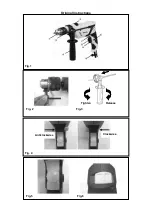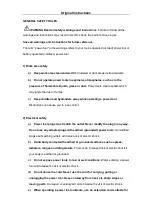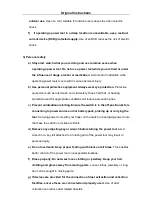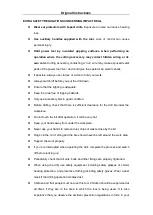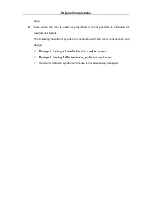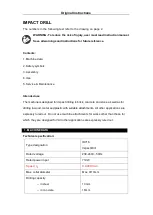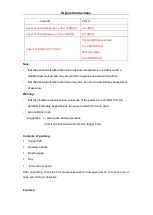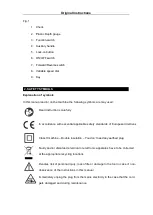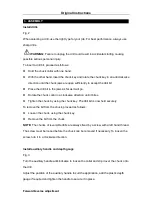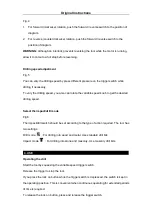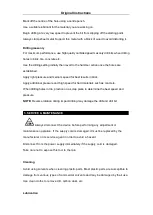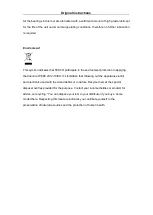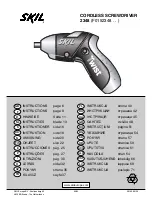
Original Instructions
Hole drilling
When attempting to drill a large diameter hole, it is sometimes best to start with a smaller
drill bit then work up to the required size.
This prevents overloading the drill.
WARNING!
Many accidents occur because of unforeseeable situations. Please
pay attention that drilling-out a small hole may cause the drill bit to jam in the hole,
especially when drilling metal.
Remem
ber to use a “wood-pecker” action on deep holes to allow the swarf to be ejected
from the hole.
If the drill bit snags, switch off immediately to prevent permanent damage to the drill.
Try running the drill in reverse to remove the bit.
Keep the drill in line with the hole. Ideally, the drill bit should enter at right angles to the
work. If the angle is changed during drilling, this could cause the bit to snap off, blocking
the hole and perhaps causing injury.
Reduce pressure as the drill is about to break through the item being drilled.
Don’t force the drill, let it work at its own pace.
Keep the drill bit sharp.
Drilling wood
For maximum performance when drilling larger holes, use auger bits or spade bits for
wood drilling.
Set the tool to the drill mode.
Begin drilling at a very low speed to prevent the bit from slipping off the starting point.
Increase the speed as it bites into the wood.
When drilling through holes, place a block of wood behind the work piece to prevent
ragged or splintered edges on the back of the hole.
Drilling steel
For maximum performance, use HSS drill bits for metal drilling.
Set the tool to the drill mode.


